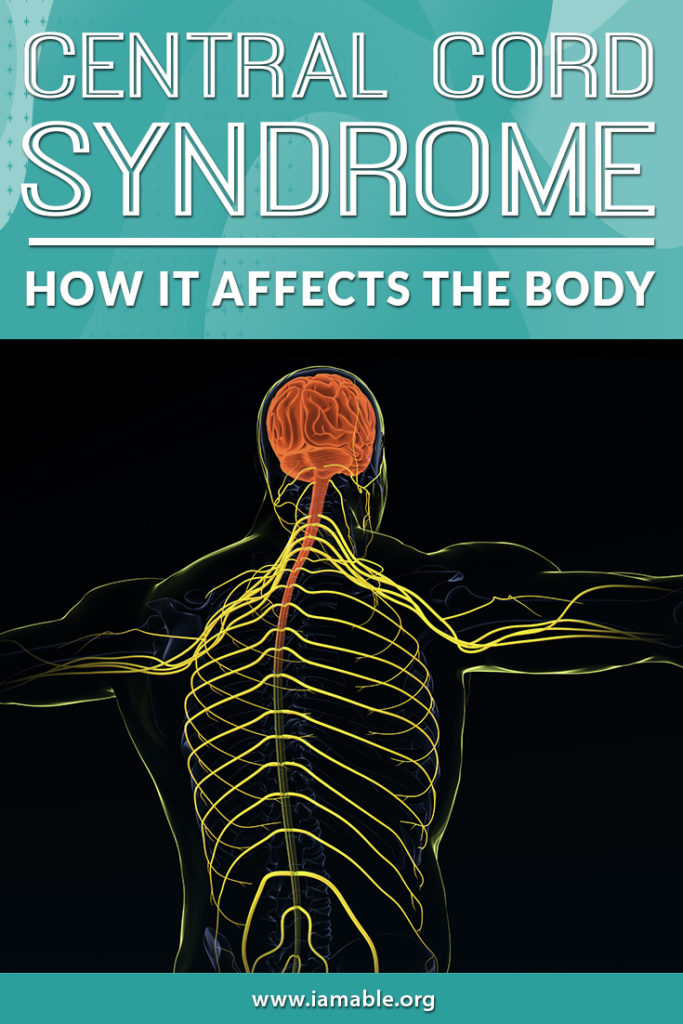Today we will discuss a type of injury called central cord syndrome (CCS). What is this condition that can cause limb weakness and partial paralysis (paresis)? We will define this condition, discuss the symptoms, and explain how to manage this syndrome with a mix of traditional and modern rehabilitation techniques. This will give you some of the information you will need to select the right neuro rehab center for your recovery program.
What Is Central Cord Syndrome?
First, we want to get a good definition of this condition. Central Cord Syndrome refers to an incomplete spinal cord injury. In other words, the damage to the spinal cord is not complete to the point where paralysis occurs below the injury. However, there is enough damage to cause symptoms below the spinal cord injury. That is why it is called incomplete, whereas a complete injury would result in paralysis. We can get a better understanding of central cord syndrome by discussing the symptoms.
The Symptoms of Central Cord Syndrome
The symptoms of central cord syndrome will vary depending on how severe the injury is and its location. However, the majority of patients are over the age of 50, and the damage is most often in the cervical spine (neck). When an incomplete injury occurs at this height on the spine, it usually results in the following problems:
- Weakness in the arms
- Possible weakness in the legs
- Difficulty with routine tasks that involve the extremities (walking, writing, buttoning, etc.)
- Urination problems including loss of sensation
- Neck pain
How Is Central Cord Syndrome Diagnosed?
Sometimes, CCS is the result of a traumatic injury, which leads to a hospital visit. At other times, you may experience a gradual onset of symptoms due to wear and tear. In this case, you may notice symptoms getting worse to the point where your general practitioner will recommend a spine specialist or even a neurosurgeon. Three primary tests can provide a proper diagnosis.
- X-rays – An x-ray can reveal fractures or breaks in the vertebrae. It may also show changes due to arthritis that could be at the heart of the gradual onset of symptoms. The tech can take images with the neck flexed both forward and back. This may reveal problems that are due to movement. If part of the problem involves moving the neck forward and back, a cervical collar may help provide the necessary stabilization. However, this could also indicate then need for surgery to provide improved stabilization of the neck.
- CT (CAT scan) – A CT is a significantly enhanced x-ray. This will allow your doctor to see more detail than any other type of scan can provide. The shape and size of the spinal canal are visible on a CT, as are the surrounding structures. Therefore, your medical practitioner gets a clear picture of what is going on with your spine that may be causing CCS.
- MRI (magnetic resonance imaging) For a 3-D look at the inside of the body, an MRI is useful. This will provide your healthcare practitioner with direct evidence of the injury or wear and tear that is causing CCS. It is the only one of these three tests that will clearly show soft tissue damage. It may reveal, not just that CCS exists but also explain the underlying cause.
Surgical and Non-Surgical Treatment of CCS
While it is rare, there may be times when surgical intervention can help relieve spinal cord compression. If imaging technology reveals the need for decompression or stabilization, then you may get a recommendation for a neurosurgeon. If surgery is not a recommended course, then there are plenty of non-surgical ways to approach CCS available from a neuro rehab center. Non-surgical treatment will also be likely during the aftermath of surgery since the intervention is more likely to lessen symptoms than to make CCS go away altogether. What are some forms of non-surgical therapy for central cord syndrome?
- Physical therapy – Physical therapy can help to improve strength, balance, and function. Therefore, it is a crucial part of recovery from central cord syndrome.
- Occupational therapy – Occupational therapy involves learning new ways to carry out activities that you need to perform on a day to day basis. This can provide you with greater independence despite any limitations imposed by CCS. As you recover, you may be able to go back to performing some tasks the way you did in the past.
- Gait training – Gait training can help you to walk more naturally and maintain your balance better. The ability to restore a natural walk will maximize the independence that you can retain. Lokomat therapy can allow you to begin treatment even before you can completely support your own weight. It employees the use of harnesses, an exoskeleton, and a treadmill. The therapist determines how much of the effort is from you and how much involves the exoskeleton.
- Functional electrical stimulation (FES) – FES involves the use of electrical pulses to activate muscles that may not function properly on their own. This can help the nervous system to restore communication.
Finding a Neuro Rehab Center for Central Cord Syndrome Recovery
In southern Florida, iAM ABLE provides all of the neuro rehab center therapies that you need for your recovery. To get started, download our eBook: 7 Unbelievable Important Steps to Take to Thrive after Paralysis. It can even encourage you if you are dealing with paresis and face a long recovery. Then give us a call at 305.283.9717 to get the neuro rehab center treatments you need to maximize your outcome.
Grab our free e-book 7 Unbelievably Important Steps to Take to THRIVE after Paralysis by clicking the image below.

